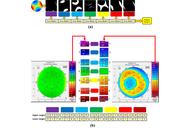
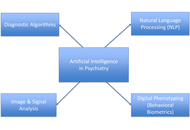

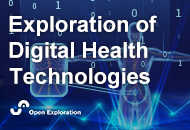
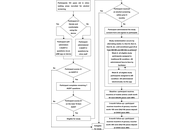
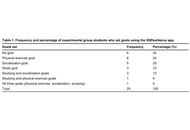

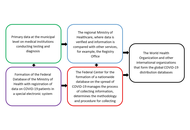
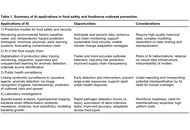
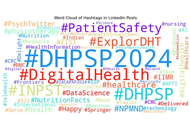
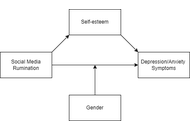
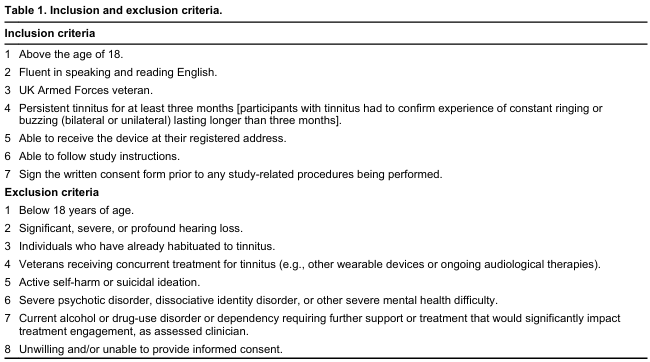
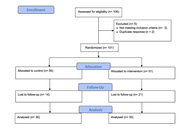
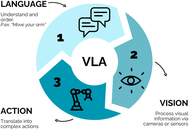
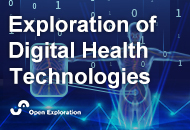
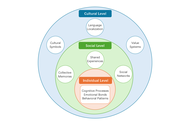
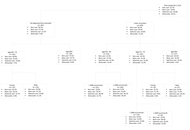
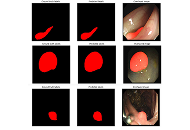
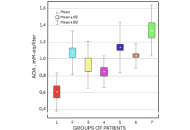
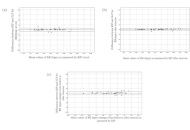

Aim:
Patients diagnosed with irregular astigmatism often require specific methods of vision correction. Among these, the use of a rigid gas permeable (RGP) lens is considered one of the most effective treatment approaches. This study aims to propose a new automated method for accurate RGP lens base-curve detection.
Methods:
A multi-modal feature fusion approach was developed based on Pentacam images, incorporating image processing and machine learning techniques. Four types of features were extracted from the images and integrated through a serial feature fusion mechanism. The fused features were then evaluated using a multi-layered perceptron (MLP) network. Specifically, the features included: (1) middle-layer outputs of a convolutional autoencoder (CAE) applied to RGB map combinations; (2) ratios of colored areas in the front cornea map; (3) a feature vector from cornea front parameters; and (4) the radius of the reference sphere/ellipse in the front elevation map.
Results:
Evaluations were performed on a manually labeled dataset. The proposed method achieved a mean squared error (MSE) of 0.005 and a coefficient of determination of 0.79, demonstrating improved accuracy compared to existing techniques.
Conclusions:
The proposed multi-modal feature fusion technique provides a reliable and accurate solution for RGP lens base-curve detection. This approach reduces manual intervention in lens fitting and represents a significant step toward automated base-curve determination.
Aim:
Patients diagnosed with irregular astigmatism often require specific methods of vision correction. Among these, the use of a rigid gas permeable (RGP) lens is considered one of the most effective treatment approaches. This study aims to propose a new automated method for accurate RGP lens base-curve detection.
Methods:
A multi-modal feature fusion approach was developed based on Pentacam images, incorporating image processing and machine learning techniques. Four types of features were extracted from the images and integrated through a serial feature fusion mechanism. The fused features were then evaluated using a multi-layered perceptron (MLP) network. Specifically, the features included: (1) middle-layer outputs of a convolutional autoencoder (CAE) applied to RGB map combinations; (2) ratios of colored areas in the front cornea map; (3) a feature vector from cornea front parameters; and (4) the radius of the reference sphere/ellipse in the front elevation map.
Results:
Evaluations were performed on a manually labeled dataset. The proposed method achieved a mean squared error (MSE) of 0.005 and a coefficient of determination of 0.79, demonstrating improved accuracy compared to existing techniques.
Conclusions:
The proposed multi-modal feature fusion technique provides a reliable and accurate solution for RGP lens base-curve detection. This approach reduces manual intervention in lens fitting and represents a significant step toward automated base-curve determination.
DOI: https://doi.org/10.37349/edht.2025.101175
This article belongs to the special issue Deep Learning Methods and Applications for Biomedical Imaging

The integration of artificial intelligence (AI) into psychiatric care is rapidly revolutionizing diagnosis, risk stratification, therapy customization, and the delivery of mental health services. This narrative review synthesized recent research on ethical issues, methodological challenges, and practical applications of AI in psychiatry. A comprehensive literature search was conducted with no limitation to publication year using PubMed, Scopus, Web of Science, and Google Scholar to identify peer-reviewed articles and grey literature related to the integration of AI in psychiatry. AI enhances early identification, predicts relapses and treatment resistance, and facilitates precision pharmacopsychiatry by leveraging data from machine learning, natural language processing, digital phenotyping, and multimodal data integration. This review highlights the advancements in the integration of AI in psychiatric care, such as chatbot-mediated psychotherapy, reinforcement learning for clinical decision-making, and AI-driven triage systems in resource-constrained environments. However, there are still serious concerns about data privacy, algorithmic bias, informed consent, and the interpretability of AI systems. Other barriers to fair and safe implementation include discrepancies in training datasets, underrepresentation of marginalized groups, and a lack of clinician preparedness. There is a need for transparent, explainable, and ethically regulated AI systems that enhance, rather than replace, human decision-making. A hybrid human-AI approach to psychiatry is recommended to address these limitations, while interdisciplinary studies, strong validation frameworks, and inclusive policymaking are needed to guarantee that AI-enhanced mental health treatment continues to be effective, fair, and reliable.
The integration of artificial intelligence (AI) into psychiatric care is rapidly revolutionizing diagnosis, risk stratification, therapy customization, and the delivery of mental health services. This narrative review synthesized recent research on ethical issues, methodological challenges, and practical applications of AI in psychiatry. A comprehensive literature search was conducted with no limitation to publication year using PubMed, Scopus, Web of Science, and Google Scholar to identify peer-reviewed articles and grey literature related to the integration of AI in psychiatry. AI enhances early identification, predicts relapses and treatment resistance, and facilitates precision pharmacopsychiatry by leveraging data from machine learning, natural language processing, digital phenotyping, and multimodal data integration. This review highlights the advancements in the integration of AI in psychiatric care, such as chatbot-mediated psychotherapy, reinforcement learning for clinical decision-making, and AI-driven triage systems in resource-constrained environments. However, there are still serious concerns about data privacy, algorithmic bias, informed consent, and the interpretability of AI systems. Other barriers to fair and safe implementation include discrepancies in training datasets, underrepresentation of marginalized groups, and a lack of clinician preparedness. There is a need for transparent, explainable, and ethically regulated AI systems that enhance, rather than replace, human decision-making. A hybrid human-AI approach to psychiatry is recommended to address these limitations, while interdisciplinary studies, strong validation frameworks, and inclusive policymaking are needed to guarantee that AI-enhanced mental health treatment continues to be effective, fair, and reliable.
DOI: https://doi.org/10.37349/edht.2025.101174

Aim:
To assess the burden of digital eye strain (DES) and associated factors among technology students at public universities in southern Ethiopia.
Methods:
A cross-sectional study was conducted from March to April 2024 at three universities—Hawassa, Dilla, and Jinka. Data were collected using pretested self-administered questionnaires, including the Digital Eye Strain Questionnaire and other relevant variables.
Results:
The survey tool was distributed to the total study population of 788 students, of whom 403 completed the survey, representing 93.5% of the calculated sample size of 431. Participants were predominantly male (74.7%) and enrolled at Hawassa University (57.8%). Daily digital device usage of ≥ 2 hours was reported by 259 (64.3%), and 72.7% had owned digital devices for > 2 years. Few participants reported smoking (0.7%), alcohol use (10.9%), or khat chewing (7.7%), and 13.9% had a history of accidents. Overall, 68.5% [95% confidence interval (CI): 64.0%–73.0%] experienced at least one symptom of DES in the past 12 months, with photophobia being the most common. DES was experienced more likely among students from Hawassa University [adjusted odds ratio (AOR) = 2.43; 95% CI: 1.11–5.30; p = 0.026], females (AOR = 2.32; 95% CI: 1.25–4.31; p = 0.008), current alcohol consumers (AOR = 3.12; 95% CI: 1.20–8.08; p = 0.019), and those with a history of accidents (AOR = 2.68; 95% CI: 1.17–6.13; p = 0.020).
Conclusions:
Over two-thirds of final-year technology students in southern Ethiopian universities reported at least one symptom of DES, with higher risk observed among females, alcohol users, and those with prior accidents.
Aim:
To assess the burden of digital eye strain (DES) and associated factors among technology students at public universities in southern Ethiopia.
Methods:
A cross-sectional study was conducted from March to April 2024 at three universities—Hawassa, Dilla, and Jinka. Data were collected using pretested self-administered questionnaires, including the Digital Eye Strain Questionnaire and other relevant variables.
Results:
The survey tool was distributed to the total study population of 788 students, of whom 403 completed the survey, representing 93.5% of the calculated sample size of 431. Participants were predominantly male (74.7%) and enrolled at Hawassa University (57.8%). Daily digital device usage of ≥ 2 hours was reported by 259 (64.3%), and 72.7% had owned digital devices for > 2 years. Few participants reported smoking (0.7%), alcohol use (10.9%), or khat chewing (7.7%), and 13.9% had a history of accidents. Overall, 68.5% [95% confidence interval (CI): 64.0%–73.0%] experienced at least one symptom of DES in the past 12 months, with photophobia being the most common. DES was experienced more likely among students from Hawassa University [adjusted odds ratio (AOR) = 2.43; 95% CI: 1.11–5.30; p = 0.026], females (AOR = 2.32; 95% CI: 1.25–4.31; p = 0.008), current alcohol consumers (AOR = 3.12; 95% CI: 1.20–8.08; p = 0.019), and those with a history of accidents (AOR = 2.68; 95% CI: 1.17–6.13; p = 0.020).
Conclusions:
Over two-thirds of final-year technology students in southern Ethiopian universities reported at least one symptom of DES, with higher risk observed among females, alcohol users, and those with prior accidents.
DOI: https://doi.org/10.37349/edht.2025.101173

Aim:
Generative text-to-image technologies offer new opportunities for individuals to visually articulate internal experiences. While traditional artistic self-portraiture has been extensively associated with self-insight, its AI-assisted equivalent remains underexplored. This study investigates the experiential and assessment potential of AI-generated self-representations and assesses their applicability within contemporary digital mental health frameworks.
Methods:
Five participants (aged 18–58) engaged in a 45-minute image generation session using Midjourney, producing approximately 500 images. This was followed by semi-structured interviews analyzed via interpretative phenomenological analysis (IPA). This study is idiographic and exploratory, drawing on the principles of IPA. Our aim is an in-depth explication of lived experience and shared experiential layers across cases. The findings should therefore be read as hypothesis-generating and as groundwork for future, larger-scale and mixed-methods evaluations and potential telepsychology integrations.
Results:
Three group experiential themes: (1) images as functional tools (e.g., as sources of comfort or aspirational vision boards); (2) self-reflective space (facilitating spontaneous self-disclosure and novel insight); and (3) modalities of self-definition (symbolic representation and narrative arc). Participants described the process as highly engaging and reported enhanced self-efficacy.
Conclusions:
AI-assisted image generation presents a flexible and user-centered modality for psychological reflection, with potential to augment art- and narrative-based therapeutic interventions. Ethical measures (e.g., anonymized data handling, withdrawal options) proved viable. Further research should explore larger, diverse samples and examine integration within telepsychology platforms to assess clinical utility.
Aim:
Generative text-to-image technologies offer new opportunities for individuals to visually articulate internal experiences. While traditional artistic self-portraiture has been extensively associated with self-insight, its AI-assisted equivalent remains underexplored. This study investigates the experiential and assessment potential of AI-generated self-representations and assesses their applicability within contemporary digital mental health frameworks.
Methods:
Five participants (aged 18–58) engaged in a 45-minute image generation session using Midjourney, producing approximately 500 images. This was followed by semi-structured interviews analyzed via interpretative phenomenological analysis (IPA). This study is idiographic and exploratory, drawing on the principles of IPA. Our aim is an in-depth explication of lived experience and shared experiential layers across cases. The findings should therefore be read as hypothesis-generating and as groundwork for future, larger-scale and mixed-methods evaluations and potential telepsychology integrations.
Results:
Three group experiential themes: (1) images as functional tools (e.g., as sources of comfort or aspirational vision boards); (2) self-reflective space (facilitating spontaneous self-disclosure and novel insight); and (3) modalities of self-definition (symbolic representation and narrative arc). Participants described the process as highly engaging and reported enhanced self-efficacy.
Conclusions:
AI-assisted image generation presents a flexible and user-centered modality for psychological reflection, with potential to augment art- and narrative-based therapeutic interventions. Ethical measures (e.g., anonymized data handling, withdrawal options) proved viable. Further research should explore larger, diverse samples and examine integration within telepsychology platforms to assess clinical utility.
DOI: https://doi.org/10.37349/edht.2025.101172
This article belongs to the special issue Digital Health Innovations in the Battle Against Psychological Problems: Progress, Hurdles, and Prospects

We describe the rationale for and design of a non-inferiority trial to evaluate the relative effectiveness of electronic alcohol screening with in-person vs. electronic brief intervention (BI) approaches implemented in Alexandra Township, South Africa, and Zacatecas-Guadalupe, Mexico. The purpose of screening and brief intervention is to identify individuals whose responses to the Alcohol Use Disorders Identification Test (AUDIT) indicate risky drinking patterns and offer them information and advice to help them reduce their drinking. We seek to determine whether a BI comprising information and advice delivered electronically, along with the opportunity to schedule an appointment with a health care professional at a later time, is not significantly worse than a more labor-intensive traditional BI provided through a face-to-face interaction with a health professional immediately following screening. Selected patients visiting participating health clinics in Alexandra and Zacatecas-Guadalupe will be asked to complete the AUDIT screening using an online app accessed via a handheld device. Those whose scores indicate risky alcohol consumption will be invited to participate in the study. Participants at the clinics will be allocated in alternate weeks to either a customary in-person BI or an electronic BI. Based on power analyses taking attrition and nesting within clinics into account, the target sample sizes are 680 in Alexandra and 560 in Zacatecas-Guadalupe. Measures of 30-day alcohol consumption and AUDIT scores will be obtained at baseline, 3 months, and 6 months. The primary outcome will be the past 30-day quantity-frequency of alcohol consumption. Outcomes will be compared for the two study conditions using mixed effects multilevel regression analyses to account for nesting of observations within participants and participants within clinics. Potential socio-demographic covariates include gender, age, marital status, the highest completed level of education, family’s primary native language (a proxy for ethnicity/culture), presence of household members younger than 16, and subjective economic status (Trial ID: NCT07150156. Clinical trial platform: ClinicalTrials.gov Protocol Registration and Results System. Web address: https://clinicaltrials.gov).
We describe the rationale for and design of a non-inferiority trial to evaluate the relative effectiveness of electronic alcohol screening with in-person vs. electronic brief intervention (BI) approaches implemented in Alexandra Township, South Africa, and Zacatecas-Guadalupe, Mexico. The purpose of screening and brief intervention is to identify individuals whose responses to the Alcohol Use Disorders Identification Test (AUDIT) indicate risky drinking patterns and offer them information and advice to help them reduce their drinking. We seek to determine whether a BI comprising information and advice delivered electronically, along with the opportunity to schedule an appointment with a health care professional at a later time, is not significantly worse than a more labor-intensive traditional BI provided through a face-to-face interaction with a health professional immediately following screening. Selected patients visiting participating health clinics in Alexandra and Zacatecas-Guadalupe will be asked to complete the AUDIT screening using an online app accessed via a handheld device. Those whose scores indicate risky alcohol consumption will be invited to participate in the study. Participants at the clinics will be allocated in alternate weeks to either a customary in-person BI or an electronic BI. Based on power analyses taking attrition and nesting within clinics into account, the target sample sizes are 680 in Alexandra and 560 in Zacatecas-Guadalupe. Measures of 30-day alcohol consumption and AUDIT scores will be obtained at baseline, 3 months, and 6 months. The primary outcome will be the past 30-day quantity-frequency of alcohol consumption. Outcomes will be compared for the two study conditions using mixed effects multilevel regression analyses to account for nesting of observations within participants and participants within clinics. Potential socio-demographic covariates include gender, age, marital status, the highest completed level of education, family’s primary native language (a proxy for ethnicity/culture), presence of household members younger than 16, and subjective economic status (Trial ID: NCT07150156. Clinical trial platform: ClinicalTrials.gov Protocol Registration and Results System. Web address: https://clinicaltrials.gov).
DOI: https://doi.org/10.37349/edht.2025.101171
This article belongs to the special issue Telepsychiatry in Low-and Middle-income Countries: an Update

Aim:
Designed to support the mental well-being of university students, the gamified Student Stress Resilience (SSResilience) app guides users in setting and working toward goals related to studying, socializing, and exercising. The app monitors progress through a combination of data from a user’s phone (via Internet of Things sensors) and information they enter themselves. This efficacy study documented students’ goal-setting efforts (RQ1) and examined the app’s effect on students’ anxiety, resilience, and psychological well-being (RQ2).
Methods:
A quasi-experimental pretest-posttest control group design was used. Experimental group students (n1 = 25) used the app for two weeks. Control group students (n2 = 50) used different means to set the same goals. All students were pre-tested and post-tested on anxiety, well-being, and resilience using standardized questionnaires.
Results:
Nineteen out of 25 experimental group students used the app to set one or more goals (19/25), and 18 of them found it helpful (18/25). The experimental group experienced a significant (t(22) = 2.72, P = 0.013) decrease in anxiety from Mpre = 8.96 (SD = 5.30) to Mpost = 5.76 (SD = 4.59), an increase in well-being from Mpre = 54.6 (SD = 25.88) to Mpost = 65.12 (SD = 23.90), but no change in resilience. Control group students’ (n = 43) measurements remained unchanged.
Conclusions:
Preliminary findings indicate a potential value of the SSResilience app for significantly reducing students’ anxiety and increasing their well-being. Integrating Internet of Things technology (built-in phone sensors) into gamified apps for health holds significant promise by offering valuable data to users, app developers, and researchers. Future research will use wearables to measure stress and physical activity more accurately than self-reports.
Aim:
Designed to support the mental well-being of university students, the gamified Student Stress Resilience (SSResilience) app guides users in setting and working toward goals related to studying, socializing, and exercising. The app monitors progress through a combination of data from a user’s phone (via Internet of Things sensors) and information they enter themselves. This efficacy study documented students’ goal-setting efforts (RQ1) and examined the app’s effect on students’ anxiety, resilience, and psychological well-being (RQ2).
Methods:
A quasi-experimental pretest-posttest control group design was used. Experimental group students (n1 = 25) used the app for two weeks. Control group students (n2 = 50) used different means to set the same goals. All students were pre-tested and post-tested on anxiety, well-being, and resilience using standardized questionnaires.
Results:
Nineteen out of 25 experimental group students used the app to set one or more goals (19/25), and 18 of them found it helpful (18/25). The experimental group experienced a significant (t(22) = 2.72, P = 0.013) decrease in anxiety from Mpre = 8.96 (SD = 5.30) to Mpost = 5.76 (SD = 4.59), an increase in well-being from Mpre = 54.6 (SD = 25.88) to Mpost = 65.12 (SD = 23.90), but no change in resilience. Control group students’ (n = 43) measurements remained unchanged.
Conclusions:
Preliminary findings indicate a potential value of the SSResilience app for significantly reducing students’ anxiety and increasing their well-being. Integrating Internet of Things technology (built-in phone sensors) into gamified apps for health holds significant promise by offering valuable data to users, app developers, and researchers. Future research will use wearables to measure stress and physical activity more accurately than self-reports.
DOI: https://doi.org/10.37349/edht.2025.101170
This article belongs to the special issue Digital Health Innovations in the Battle Against Psychological Problems: Progress, Hurdles, and Prospects

Aim:
Obsessive-compulsive disorder (OCD) is a mental health condition that significantly interferes with the school environment. The concealment of symptoms, lack of identification, and limited knowledge about the disorder often lead to delays in help-seeking, which are associated with greater chronicity, increased interference, and poorer treatment response. Programmes that educate teachers on early detection of OCD could help identify children at risk and promote help-seeking behavior. This study analyzed the feasibility, acceptability, and preliminary efficacy of the health app esTOCma from both quantitative and qualitative perspectives among teachers, as well as explored areas for improvement.
Methods:
A total of 19 teachers (mean age = 47.74 years, SD = 11.2) completed the intervention along with pre- and post-intervention assessments through the app. In addition, they responded to open-ended questions to share their opinions about the app.
Results:
Teachers took an average of 4.89 days (SD = 4.21) to complete the intervention. The app demonstrated excellent usability (M = 85.5, SD = 10.3) and was found useful by the majority of participants (89.5%), who reported satisfaction (84.2%) and stated they had learned considerably (73.7%) through its use. Upon completing the intervention, participants showed greater understanding of OCD and its treatments (MHLQ-R: z = –2.92, p = 0.004), lower levels of stigma (AQ-9: z = –3.67, p < 0.001), and a higher intention to seek professional help in case of experiencing obsessive-compulsive symptoms (GHSQ: z = –2.50, p = 0.012).
Conclusions:
esTOCma appears to be a feasible app in an educational context, showing high acceptability among participating teachers. Moreover, the app increases knowledge and understanding of OCD, promotes the intention to seek professional help, and reduces stigma toward the disorder. Several improvements are suggested to further enhance the app’s potential impact in educational settings.
Aim:
Obsessive-compulsive disorder (OCD) is a mental health condition that significantly interferes with the school environment. The concealment of symptoms, lack of identification, and limited knowledge about the disorder often lead to delays in help-seeking, which are associated with greater chronicity, increased interference, and poorer treatment response. Programmes that educate teachers on early detection of OCD could help identify children at risk and promote help-seeking behavior. This study analyzed the feasibility, acceptability, and preliminary efficacy of the health app esTOCma from both quantitative and qualitative perspectives among teachers, as well as explored areas for improvement.
Methods:
A total of 19 teachers (mean age = 47.74 years, SD = 11.2) completed the intervention along with pre- and post-intervention assessments through the app. In addition, they responded to open-ended questions to share their opinions about the app.
Results:
Teachers took an average of 4.89 days (SD = 4.21) to complete the intervention. The app demonstrated excellent usability (M = 85.5, SD = 10.3) and was found useful by the majority of participants (89.5%), who reported satisfaction (84.2%) and stated they had learned considerably (73.7%) through its use. Upon completing the intervention, participants showed greater understanding of OCD and its treatments (MHLQ-R: z = –2.92, p = 0.004), lower levels of stigma (AQ-9: z = –3.67, p < 0.001), and a higher intention to seek professional help in case of experiencing obsessive-compulsive symptoms (GHSQ: z = –2.50, p = 0.012).
Conclusions:
esTOCma appears to be a feasible app in an educational context, showing high acceptability among participating teachers. Moreover, the app increases knowledge and understanding of OCD, promotes the intention to seek professional help, and reduces stigma toward the disorder. Several improvements are suggested to further enhance the app’s potential impact in educational settings.
DOI: https://doi.org/10.37349/edht.2025.101169
This article belongs to the special issue Digital Health Innovations in the Battle Against Psychological Problems: Progress, Hurdles, and Prospects

Aim:
This study analyses the time series of daily increases in the number of diagnosed COVID-19 cases in Russia and countries from different continents. The aim of the study is to identify the specifics of the population response of different countries to the spread of the pandemic and anti-epidemic measures of public authorities to determine the most effective model to describe this process. This is a problematic, synoptic, and pilot study.
Methods:
To evaluate this response strategy, models and methods from reliability theory are used to describe the probability of health protection, the probability density function of an increasing number of cases, the integrated risk of infection, the risk of morbidity, the acceptable risk, and the manageability of the epidemic situation. To approximate infection curves, various daily incidence rate functions are used and compared, and their coefficients are calculated for various pandemic waves.
Results:
The results demonstrate that the Fréchet distribution function is the best model for the epidemic process. Indicators of variability in acceptable risk were identified during the first stage of pandemic development, showing the varying controllability of the situation by health systems. Through meta-analysis, country distributions were shown to appear as a single pattern, abstracted from local conditions. Estimated coefficients of reliability functions allow the construction of cartograms that reflect the peculiarities of state epidemic regulation and the stages of global pandemic deployment.
Conclusions:
The findings confirm the effectiveness of the selected model in terms of reliability theory and identify directions for model improvement, taking into account the dynamic nature of the pandemic and its specific characteristics in different countries. The study is based on the methodological approach of function stratification (geometric fiber bundle). It allows for a deeper understanding of the identified patterns within a broader knowledge system.
Aim:
This study analyses the time series of daily increases in the number of diagnosed COVID-19 cases in Russia and countries from different continents. The aim of the study is to identify the specifics of the population response of different countries to the spread of the pandemic and anti-epidemic measures of public authorities to determine the most effective model to describe this process. This is a problematic, synoptic, and pilot study.
Methods:
To evaluate this response strategy, models and methods from reliability theory are used to describe the probability of health protection, the probability density function of an increasing number of cases, the integrated risk of infection, the risk of morbidity, the acceptable risk, and the manageability of the epidemic situation. To approximate infection curves, various daily incidence rate functions are used and compared, and their coefficients are calculated for various pandemic waves.
Results:
The results demonstrate that the Fréchet distribution function is the best model for the epidemic process. Indicators of variability in acceptable risk were identified during the first stage of pandemic development, showing the varying controllability of the situation by health systems. Through meta-analysis, country distributions were shown to appear as a single pattern, abstracted from local conditions. Estimated coefficients of reliability functions allow the construction of cartograms that reflect the peculiarities of state epidemic regulation and the stages of global pandemic deployment.
Conclusions:
The findings confirm the effectiveness of the selected model in terms of reliability theory and identify directions for model improvement, taking into account the dynamic nature of the pandemic and its specific characteristics in different countries. The study is based on the methodological approach of function stratification (geometric fiber bundle). It allows for a deeper understanding of the identified patterns within a broader knowledge system.
DOI: https://doi.org/10.37349/edht.2025.101168
This article belongs to the special issue Data-informed Decision Making in Healthcare

The World Health Organization (WHO) estimates that unsafe food is responsible for 600 million cases and over 400,000 deaths annually. Traditional outbreak investigations are often time-consuming, inefficient, and limited by the quality and timeliness of available data. The integration of artificial intelligence (AI), such as machine learning, offers innovative approaches to improve the accuracy, speed, and efficiency of foodborne disease surveillance and outbreak detection. We conducted a mini review of the published literature and explored the potential applications of AI in foodborne disease prevention and control. Key areas explored included predictive analytics, food supply chain monitoring, public health surveillance, and laboratory-based investigations. AI-based predictive models support improved monitoring of environmental risk factors, better management of food supply chains, and more timely detection and prevention of contamination and outbreaks. We also described several challenges related to the integration of AI in food safety systems, including data quality, regulatory frameworks, and ethical considerations. By integrating advanced AI-driven methods, the future of food safety promises greater efficacy and equity in public health.
The World Health Organization (WHO) estimates that unsafe food is responsible for 600 million cases and over 400,000 deaths annually. Traditional outbreak investigations are often time-consuming, inefficient, and limited by the quality and timeliness of available data. The integration of artificial intelligence (AI), such as machine learning, offers innovative approaches to improve the accuracy, speed, and efficiency of foodborne disease surveillance and outbreak detection. We conducted a mini review of the published literature and explored the potential applications of AI in foodborne disease prevention and control. Key areas explored included predictive analytics, food supply chain monitoring, public health surveillance, and laboratory-based investigations. AI-based predictive models support improved monitoring of environmental risk factors, better management of food supply chains, and more timely detection and prevention of contamination and outbreaks. We also described several challenges related to the integration of AI in food safety systems, including data quality, regulatory frameworks, and ethical considerations. By integrating advanced AI-driven methods, the future of food safety promises greater efficacy and equity in public health.
DOI: https://doi.org/10.37349/edht.2025.101167

Aim:
This manuscript summarizes the key scientific and practical outcomes of the #DHPSP2024 digital networking event, focusing on emerging trends in digital health technologies, innovations in patient safety, and their implications for improving healthcare delivery.
Methods:
The #DHPSP2024 event was held from June 18 to 20, 2024, on X (formerly Twitter) and LinkedIn, connecting professionals and stakeholders in digital health and patient safety from different sectors. Data from posts on X and LinkedIn were analyzed for geographical distribution, engagement metrics (impressions, likes, shares), top hashtags, and frequently used terms. A qualitative analysis of the central themes and key online messaging discussions of the network event was also conducted.
Results:
On X, 2,329 posts by 179 participants from 38 countries generated over 231,000 impressions, with the most activity in Austria, China, and India. LinkedIn engagement included 3,475 likes, 217 comments, and 2,030 shares. Both platforms highlighted core themes such as digital health, patient safety, treatment quality, research on natural compounds, and interdisciplinary collaboration. Online messaging discussions emphasized technologies like telemedicine and artificial intelligence as critical tools for enhancing care delivery and patient safety. Participants also promoted special issues of scientific journals and explored collaborative research opportunities.
Conclusions:
The #DHPSP2024 event underscored the pivotal role of digital technologies in transforming healthcare, particularly in improving the quality and safety of interventions. The findings demonstrate how digital networking events, grounded in open innovation, foster global research communities, accelerate knowledge exchange, and support the integration of clinically relevant digital solutions. The strong engagement reflects growing interest in leveraging digital platforms to advance health outcomes and professional development. Overall, the event contributed to greater visibility of ongoing research, encouraged interdisciplinary cooperation, and may positively influence both the adoption of innovations in healthcare practice and the dissemination of scientific knowledge.
Aim:
This manuscript summarizes the key scientific and practical outcomes of the #DHPSP2024 digital networking event, focusing on emerging trends in digital health technologies, innovations in patient safety, and their implications for improving healthcare delivery.
Methods:
The #DHPSP2024 event was held from June 18 to 20, 2024, on X (formerly Twitter) and LinkedIn, connecting professionals and stakeholders in digital health and patient safety from different sectors. Data from posts on X and LinkedIn were analyzed for geographical distribution, engagement metrics (impressions, likes, shares), top hashtags, and frequently used terms. A qualitative analysis of the central themes and key online messaging discussions of the network event was also conducted.
Results:
On X, 2,329 posts by 179 participants from 38 countries generated over 231,000 impressions, with the most activity in Austria, China, and India. LinkedIn engagement included 3,475 likes, 217 comments, and 2,030 shares. Both platforms highlighted core themes such as digital health, patient safety, treatment quality, research on natural compounds, and interdisciplinary collaboration. Online messaging discussions emphasized technologies like telemedicine and artificial intelligence as critical tools for enhancing care delivery and patient safety. Participants also promoted special issues of scientific journals and explored collaborative research opportunities.
Conclusions:
The #DHPSP2024 event underscored the pivotal role of digital technologies in transforming healthcare, particularly in improving the quality and safety of interventions. The findings demonstrate how digital networking events, grounded in open innovation, foster global research communities, accelerate knowledge exchange, and support the integration of clinically relevant digital solutions. The strong engagement reflects growing interest in leveraging digital platforms to advance health outcomes and professional development. Overall, the event contributed to greater visibility of ongoing research, encouraged interdisciplinary cooperation, and may positively influence both the adoption of innovations in healthcare practice and the dissemination of scientific knowledge.
DOI: https://doi.org/10.37349/edht.2025.101166

Aim:
Given the ubiquitous use of social media among young adults, understanding its impact on their psychological well-being is increasingly important. Research has identified negative associations between social media use and internalizing problems, such as depression and anxiety. Building on the previous research, the current study explored the mediating role of self-esteem in the associations between social media rumination (SMR) and symptoms of depression and anxiety in college students. Additionally, the study investigated the moderating role of gender in these associations.
Methods:
The study sample consisted of 551 college students (mean age = 19 years; 36% men, 23.8% White) from a diverse midwestern university. The participants completed measures of depression (PHQ-9), anxiety (GAD-7), self-esteem (RSES), and SMR (Social Media Rumination Scale [SMRS]). An exploratory factor analysis was performed on the SMRS and supported a one-factor structure for the measure. Main analyses were conducted in R using PROCESS Model 4 and examined the associations between SMR and symptoms of depression and anxiety, with self-esteem as a mediator, and gender as a moderator. Additionally, time spent on social media and the number of posts per week were included as covariates in the analyses.
Results:
Results indicated that SMR, above and beyond time spent on social media and type of engagement, was indirectly associated with depression and anxiety through self-esteem, and gender did not moderate these associations.
Conclusions:
The study’s findings contribute to our understanding of the mechanisms linking social media use to internalizing problems, highlighting the crucial role of self-esteem in this process. Moreover, the study offers valuable insights for developing targeted interventions aimed at mitigating the negative effects of social media use on mental health by addressing SMR and bolstering self-esteem in young adults.
Aim:
Given the ubiquitous use of social media among young adults, understanding its impact on their psychological well-being is increasingly important. Research has identified negative associations between social media use and internalizing problems, such as depression and anxiety. Building on the previous research, the current study explored the mediating role of self-esteem in the associations between social media rumination (SMR) and symptoms of depression and anxiety in college students. Additionally, the study investigated the moderating role of gender in these associations.
Methods:
The study sample consisted of 551 college students (mean age = 19 years; 36% men, 23.8% White) from a diverse midwestern university. The participants completed measures of depression (PHQ-9), anxiety (GAD-7), self-esteem (RSES), and SMR (Social Media Rumination Scale [SMRS]). An exploratory factor analysis was performed on the SMRS and supported a one-factor structure for the measure. Main analyses were conducted in R using PROCESS Model 4 and examined the associations between SMR and symptoms of depression and anxiety, with self-esteem as a mediator, and gender as a moderator. Additionally, time spent on social media and the number of posts per week were included as covariates in the analyses.
Results:
Results indicated that SMR, above and beyond time spent on social media and type of engagement, was indirectly associated with depression and anxiety through self-esteem, and gender did not moderate these associations.
Conclusions:
The study’s findings contribute to our understanding of the mechanisms linking social media use to internalizing problems, highlighting the crucial role of self-esteem in this process. Moreover, the study offers valuable insights for developing targeted interventions aimed at mitigating the negative effects of social media use on mental health by addressing SMR and bolstering self-esteem in young adults.
DOI: https://doi.org/10.37349/edht.2025.101164
This article belongs to the special issue Digital Health Innovations in the Battle Against Psychological Problems: Progress, Hurdles, and Prospects

The prevalence of tinnitus in veterans is notably higher than in the general population and can significantly disrupt daily life. Given the impact of tinnitus, along with the lack of effective interventions, exploring new approaches is warranted. Wearable sound technologies offer a non-invasive and easily accessible approach. However, limited research has explored the effectiveness of sound therapy in UK veterans. A prior study supported the feasibility and acceptability of a non-invasive wearable device (i.e., TinniSoothe) in a sample of veterans. However, a waitlist-controlled trial is needed to investigate the effectiveness of the device. This waitlist-controlled trial aims to explore the effectiveness of a wearable device in reducing tinnitus symptoms in a sample of UK veterans. Veterans will be randomly allocated to one of two conditions: (1) the immediate intervention condition, which receives the device post-randomisation, or (2) the waitlist control group, which receives the device one-month post-randomisation. The trial will be conducted in veterans (n = 20) who have experienced tinnitus. Participants will be asked to use the device for one month. The immediate intervention group will be compared to the waitlist control group. The primary outcome is change in tinnitus severity (Tinnitus Functional Index, TFI) and mental health (General Health Questionnaire-12, GHQ-12) from baseline to one-month post-randomisation. Primary and secondary outcomes will be assessed at all timepoints (baseline, one-month post-randomisation, and two-month post-randomisation), while predictor variables will only be assessed at baseline to reduce participant burden. Recruitment will begin in October 2025. The study is expected to take 12 months, with results published in 2027. This study explores whether a wearable device is efficacious in reducing self-reported symptoms of tinnitus in comparison to a waitlist control group. This innovative approach, if successful, could offer a practical option for reducing tinnitus distress. The trial is registered on clinicaltrials.gov, identifier: NCT06905158.
The prevalence of tinnitus in veterans is notably higher than in the general population and can significantly disrupt daily life. Given the impact of tinnitus, along with the lack of effective interventions, exploring new approaches is warranted. Wearable sound technologies offer a non-invasive and easily accessible approach. However, limited research has explored the effectiveness of sound therapy in UK veterans. A prior study supported the feasibility and acceptability of a non-invasive wearable device (i.e., TinniSoothe) in a sample of veterans. However, a waitlist-controlled trial is needed to investigate the effectiveness of the device. This waitlist-controlled trial aims to explore the effectiveness of a wearable device in reducing tinnitus symptoms in a sample of UK veterans. Veterans will be randomly allocated to one of two conditions: (1) the immediate intervention condition, which receives the device post-randomisation, or (2) the waitlist control group, which receives the device one-month post-randomisation. The trial will be conducted in veterans (n = 20) who have experienced tinnitus. Participants will be asked to use the device for one month. The immediate intervention group will be compared to the waitlist control group. The primary outcome is change in tinnitus severity (Tinnitus Functional Index, TFI) and mental health (General Health Questionnaire-12, GHQ-12) from baseline to one-month post-randomisation. Primary and secondary outcomes will be assessed at all timepoints (baseline, one-month post-randomisation, and two-month post-randomisation), while predictor variables will only be assessed at baseline to reduce participant burden. Recruitment will begin in October 2025. The study is expected to take 12 months, with results published in 2027. This study explores whether a wearable device is efficacious in reducing self-reported symptoms of tinnitus in comparison to a waitlist control group. This innovative approach, if successful, could offer a practical option for reducing tinnitus distress. The trial is registered on clinicaltrials.gov, identifier: NCT06905158.
DOI: https://doi.org/10.37349/edht.2025.101165
This article belongs to the special issue Digital Health Innovations in the Battle Against Psychological Problems: Progress, Hurdles, and Prospects

Aim:
In 2023, the average woman used 13 different personal care products (PCPs) daily, exposing them to 114 different chemical toxins, including carcinogens, synthetic preservatives, and fragrances. Parabens, commonly used as preservatives and fragrance ingredients, are found in household and PCPs, such as cosmetics and hair products. Exposure to parabens has been associated with an increased risk of breast cancer and endocrine disorders. This study aims to evaluate the effectiveness of the “Paraben-Free & Me” educational toolkit (OSF Registration DOI: 10.17605/OSF.IO/WXU34) by exploring whether it influences changes of 3.5 points (10%) in paraben-free behaviour in women aged 18–35 years old when compared to the control group.
Methods:
This study consists of a randomized controlled trial to evaluate the effectiveness of the educational toolkit among 101 female students aged 18 to 35 years old following a four-week intervention period. Baseline and follow-up questionnaires were used to assess participants’ knowledge and access to information, risk perception, health beliefs, and paraben-free behaviour by providing composite scores for each construct.
Results:
The change in the knowledge and access to information score was significantly greater in the intervention group compared to the control group (+3.96, 95% CI [1.95, 5.96]). There were slight differences between groups in relation to health beliefs (+0.63, 95% CI [–1.02, 2.27]), risk perception (+0.96, 95% CI [–0.61, 2.54]), and paraben-free behaviour (–0.16, 95% CI [–2.88, 2.57]); however, these were not statistically significant.
Conclusions:
This study suggests that while the “Paraben-Free & Me” educational toolkit was unsuccessful in promoting greater paraben-free behaviour in the intervention group, it can increase women’s knowledge and access to information related to parabens in their PCPs. Future studies can focus on evaluating paraben-free behaviour and the effectiveness of the educational toolkit by exploring biological measures, such as urinary concentrations of parabens, and air pollutant concentrations.
Aim:
In 2023, the average woman used 13 different personal care products (PCPs) daily, exposing them to 114 different chemical toxins, including carcinogens, synthetic preservatives, and fragrances. Parabens, commonly used as preservatives and fragrance ingredients, are found in household and PCPs, such as cosmetics and hair products. Exposure to parabens has been associated with an increased risk of breast cancer and endocrine disorders. This study aims to evaluate the effectiveness of the “Paraben-Free & Me” educational toolkit (OSF Registration DOI: 10.17605/OSF.IO/WXU34) by exploring whether it influences changes of 3.5 points (10%) in paraben-free behaviour in women aged 18–35 years old when compared to the control group.
Methods:
This study consists of a randomized controlled trial to evaluate the effectiveness of the educational toolkit among 101 female students aged 18 to 35 years old following a four-week intervention period. Baseline and follow-up questionnaires were used to assess participants’ knowledge and access to information, risk perception, health beliefs, and paraben-free behaviour by providing composite scores for each construct.
Results:
The change in the knowledge and access to information score was significantly greater in the intervention group compared to the control group (+3.96, 95% CI [1.95, 5.96]). There were slight differences between groups in relation to health beliefs (+0.63, 95% CI [–1.02, 2.27]), risk perception (+0.96, 95% CI [–0.61, 2.54]), and paraben-free behaviour (–0.16, 95% CI [–2.88, 2.57]); however, these were not statistically significant.
Conclusions:
This study suggests that while the “Paraben-Free & Me” educational toolkit was unsuccessful in promoting greater paraben-free behaviour in the intervention group, it can increase women’s knowledge and access to information related to parabens in their PCPs. Future studies can focus on evaluating paraben-free behaviour and the effectiveness of the educational toolkit by exploring biological measures, such as urinary concentrations of parabens, and air pollutant concentrations.
DOI: https://doi.org/10.37349/edht.2025.101163

Medicine is undergoing a deep technological transformation, with surgery on the cusp of this change, as technologies such as artificial intelligence (AI), augmented reality (AR), real-time imaging, and robotics converge to transform operative care. These innovations are now progressively being integrated into practice, driving precision surgery closer to reality. We aimed to assess how the convergence of AI, AR, real-time imaging, and robotics is advancing precision surgery and to outline the next wave of operative care. For doing this, we conducted a narrative perspective of publications that address AI-driven decision-making, AR-guided navigation, semi-autonomous robotics, and real-time imaging tailoring in surgical contexts. We observed that AI algorithms are expanding the potential of medicine by analyzing diverse data sets to optimize treatment strategies. AR-based navigation systems overlay digital anatomical information onto the surgical field, improving surgeon awareness and accuracy. Concurrently, AI-powered robotics are beginning to perform some surgical tasks semi-autonomously, potentially shortening procedure times and improving patient outcomes. Over time, the synergy between these disciplines may yield a new era of surgery: One where patient stratification guides operative decisions and where surgeons rely on data-driven systems for intraoperative feedback. This approach reinforces the principles of precision medicine and points toward a future in which surgery evolves hand in hand to improve clinical outcomes and patient safety. The synergy of data-driven surgery and personalized therapeutics brings a new era in precision medicine in which operative decisions may be dynamically tailored to the individual, promising greater safety and better clinical results.
Medicine is undergoing a deep technological transformation, with surgery on the cusp of this change, as technologies such as artificial intelligence (AI), augmented reality (AR), real-time imaging, and robotics converge to transform operative care. These innovations are now progressively being integrated into practice, driving precision surgery closer to reality. We aimed to assess how the convergence of AI, AR, real-time imaging, and robotics is advancing precision surgery and to outline the next wave of operative care. For doing this, we conducted a narrative perspective of publications that address AI-driven decision-making, AR-guided navigation, semi-autonomous robotics, and real-time imaging tailoring in surgical contexts. We observed that AI algorithms are expanding the potential of medicine by analyzing diverse data sets to optimize treatment strategies. AR-based navigation systems overlay digital anatomical information onto the surgical field, improving surgeon awareness and accuracy. Concurrently, AI-powered robotics are beginning to perform some surgical tasks semi-autonomously, potentially shortening procedure times and improving patient outcomes. Over time, the synergy between these disciplines may yield a new era of surgery: One where patient stratification guides operative decisions and where surgeons rely on data-driven systems for intraoperative feedback. This approach reinforces the principles of precision medicine and points toward a future in which surgery evolves hand in hand to improve clinical outcomes and patient safety. The synergy of data-driven surgery and personalized therapeutics brings a new era in precision medicine in which operative decisions may be dynamically tailored to the individual, promising greater safety and better clinical results.
DOI: https://doi.org/10.37349/edht.2025.101162

Digital mental health interventions (DMHIs) have demonstrated considerable potential to address mental health needs across diverse populations by offering scalable, adaptable, and cost-effective solutions. Nevertheless, their implementation in the Global South—particularly among Indigenous peoples and traditional communities—remains scattered and insufficiently systematised. These communities frequently face structural inequalities, limited access to formal mental health services, and distinct sociocultural frameworks that necessitate the development of culturally appropriate digital interventions. To date, existing reviews have focused predominantly on high-income countries, highlighting the urgent need to synthesise context-specific evidence from low- and middle-income settings. Therefore, this protocol outlines the design of a scoping review aimed at examining the available evidence on DMHIs targeting Indigenous peoples and traditional communities in the Global South. The scoping review will be conducted in accordance with the Joanna Briggs Institute (JBI) methodology for scoping reviews, and the results will be reported in line with the PRISMA-ScR guidelines. It will include articles resulting from primary research, systematic reviews, and opinion papers related to DMHIs in Indigenous and traditional populations in the Global South. No restrictions will be applied regarding the languages and year of publication. The search will be conducted in the following databases: MEDLINE, CINAHL, PsycINFO, Scopus, Embase, BVS Lilacs, African Index Medicus, and Index Medicus for the South-East Asia Region. Study selection and data extraction will be performed independently by three reviewers. The synthesis will include a numerical summary to provide an overview of the characteristics of the included studies, as well as a qualitative analysis aimed at identifying, analysing, and reporting recurring patterns and emerging categories within the data. The results will inform the development of future culturally competent digital mental health strategies tailored to the needs of Indigenous and traditional communities in the Global South.
Digital mental health interventions (DMHIs) have demonstrated considerable potential to address mental health needs across diverse populations by offering scalable, adaptable, and cost-effective solutions. Nevertheless, their implementation in the Global South—particularly among Indigenous peoples and traditional communities—remains scattered and insufficiently systematised. These communities frequently face structural inequalities, limited access to formal mental health services, and distinct sociocultural frameworks that necessitate the development of culturally appropriate digital interventions. To date, existing reviews have focused predominantly on high-income countries, highlighting the urgent need to synthesise context-specific evidence from low- and middle-income settings. Therefore, this protocol outlines the design of a scoping review aimed at examining the available evidence on DMHIs targeting Indigenous peoples and traditional communities in the Global South. The scoping review will be conducted in accordance with the Joanna Briggs Institute (JBI) methodology for scoping reviews, and the results will be reported in line with the PRISMA-ScR guidelines. It will include articles resulting from primary research, systematic reviews, and opinion papers related to DMHIs in Indigenous and traditional populations in the Global South. No restrictions will be applied regarding the languages and year of publication. The search will be conducted in the following databases: MEDLINE, CINAHL, PsycINFO, Scopus, Embase, BVS Lilacs, African Index Medicus, and Index Medicus for the South-East Asia Region. Study selection and data extraction will be performed independently by three reviewers. The synthesis will include a numerical summary to provide an overview of the characteristics of the included studies, as well as a qualitative analysis aimed at identifying, analysing, and reporting recurring patterns and emerging categories within the data. The results will inform the development of future culturally competent digital mental health strategies tailored to the needs of Indigenous and traditional communities in the Global South.
DOI: https://doi.org/10.37349/edht.2025.101161
This article belongs to the special issue Digital Health Innovations in the Battle Against Psychological Problems: Progress, Hurdles, and Prospects

Virtual reality (VR) and digital health technologies have shown increasing potential in addressing psychological challenges such as homesickness and emotional distress, yet the role of emotional bonds, particularly place attachment, in shaping the design and effectiveness of these interventions remains underexplored. This study conceptualizes the integration of place attachment theory into digital health interventions, especially those utilizing VR, and proposes a theoretical and practical framework for designing emotionally resonant virtual environments. Two interrelated conceptual models are introduced: the Virtual Place Attachment Development Model (VPADM), which outlines psychological, social, environmental, and cultural dimensions that contribute to emotional bonding with virtual spaces, and the Cultural Adaptation System for Virtual Environments (CASVE), which addresses cross-cultural adaptation processes through assessment, implementation, and evaluation. These frameworks illustrate how virtual place attachment can be purposefully designed to enhance user engagement and emotional well-being, while also highlighting practical challenges such as accessibility, digital literacy, and the need for culturally responsive content. By integrating place attachment theory into digital mental health design, the paper offers a pathway to improve therapeutic outcomes in VR environments and provides a foundation for researchers and practitioners to develop emotionally supportive, culturally meaningful, and context-sensitive digital health interventions.
Virtual reality (VR) and digital health technologies have shown increasing potential in addressing psychological challenges such as homesickness and emotional distress, yet the role of emotional bonds, particularly place attachment, in shaping the design and effectiveness of these interventions remains underexplored. This study conceptualizes the integration of place attachment theory into digital health interventions, especially those utilizing VR, and proposes a theoretical and practical framework for designing emotionally resonant virtual environments. Two interrelated conceptual models are introduced: the Virtual Place Attachment Development Model (VPADM), which outlines psychological, social, environmental, and cultural dimensions that contribute to emotional bonding with virtual spaces, and the Cultural Adaptation System for Virtual Environments (CASVE), which addresses cross-cultural adaptation processes through assessment, implementation, and evaluation. These frameworks illustrate how virtual place attachment can be purposefully designed to enhance user engagement and emotional well-being, while also highlighting practical challenges such as accessibility, digital literacy, and the need for culturally responsive content. By integrating place attachment theory into digital mental health design, the paper offers a pathway to improve therapeutic outcomes in VR environments and provides a foundation for researchers and practitioners to develop emotionally supportive, culturally meaningful, and context-sensitive digital health interventions.
DOI: https://doi.org/10.37349/edht.2025.101160

Aim:
Moving beyond the traditional use/non-use dichotomy, this study examines how variations in older adults’ internet use relate to their multidimensional frailty status.
Methods:
Data were drawn from the Belgian Ageing Studies (BAS), a large-scale cross-sectional survey conducted in Flanders (Belgium) and included 2,312 individuals aged 60 and older. Internet use was categorized into non-users, basic users, selective users and allround users. Multidimensional frailty was assessed using the Comprehensive Frailty Assessment Instrument (CFAI), covering physical, psychological, social and environmental domains. Multinomial logistic regression and Chi-squared automatic interaction detection (CHAID) were conducted.
Results:
Regression analysis revealed that older adults with mild or high levels of physical frailty, as well as those with high levels of environmental frailty, were more likely to not use the internet. Furthermore, individuals with high physical frailty and high social frailty were more likely to be basic internet users. Social frailty was also linked to allround internet use, with those in the mild and high frailty categories being less likely to be allround users. However, CHAID analysis highlighted that sociodemographic factors—particularly low education and advanced age—are more strongly associated with low internet usage than frailty itself.
Conclusions:
Multidimensional frailty is associated with internet use, with mild and high frailty groups being less internet savvy.
Aim:
Moving beyond the traditional use/non-use dichotomy, this study examines how variations in older adults’ internet use relate to their multidimensional frailty status.
Methods:
Data were drawn from the Belgian Ageing Studies (BAS), a large-scale cross-sectional survey conducted in Flanders (Belgium) and included 2,312 individuals aged 60 and older. Internet use was categorized into non-users, basic users, selective users and allround users. Multidimensional frailty was assessed using the Comprehensive Frailty Assessment Instrument (CFAI), covering physical, psychological, social and environmental domains. Multinomial logistic regression and Chi-squared automatic interaction detection (CHAID) were conducted.
Results:
Regression analysis revealed that older adults with mild or high levels of physical frailty, as well as those with high levels of environmental frailty, were more likely to not use the internet. Furthermore, individuals with high physical frailty and high social frailty were more likely to be basic internet users. Social frailty was also linked to allround internet use, with those in the mild and high frailty categories being less likely to be allround users. However, CHAID analysis highlighted that sociodemographic factors—particularly low education and advanced age—are more strongly associated with low internet usage than frailty itself.
Conclusions:
Multidimensional frailty is associated with internet use, with mild and high frailty groups being less internet savvy.
DOI: https://doi.org/10.37349/edht.2025.101159

Aim:
Colorectal cancer is a leading cause of cancer-related mortality, emphasising the need for accurate polyp segmentation during colonoscopy for early detection. Existing methods often struggle to generalize effectively across diverse clinical scenarios. This study introduces DeepPolyp, an artificial intelligence framework designed for comprehensive benchmarking and real-time clinical deployment of polyp segmentation models.
Methods:
Transformer-based segmentation models, SegFormer and SSFormer, were trained from scratch using an extensive dataset comprising public collections (CVC-ClinicDB, ETIS-LaribPolypDB, Kvasir) and recently augmented datasets (PolypDataset-TCNoEndo, PolypGen). Training involved standardized data augmentation, learning rate schedules, and early stopping. Models were evaluated using Dice and Intersection over Union (IoU) metrics. Real-time inference performance was assessed on an NVIDIA Jetson Orin device with ONNX and TensorRT optimizations.
Results:
SegFormer-B4 achieved the highest accuracy (Dice: 0.9843, IoU: 0.9694), but was not selected for clinical deployment due to computational constraints. SegFormer-B2 provided comparable accuracy (Dice: 0.9787, IoU: 0.9588) with significantly faster inference (94 ms per frame), offering an optimal balance suitable for real-time clinical use. SSFormer showed lower accuracy and slower inference, limiting its practical deployment.
Conclusions:
DeepPolyp enables systematic evaluation of polyp segmentation models, assisting in selecting models based on both performance and computational efficiency. Despite superior accuracy from SegFormer-B4, SegFormer-B2 was selected for clinical deployment due to its advantageous balance between accuracy and real-time execution efficiency.
Aim:
Colorectal cancer is a leading cause of cancer-related mortality, emphasising the need for accurate polyp segmentation during colonoscopy for early detection. Existing methods often struggle to generalize effectively across diverse clinical scenarios. This study introduces DeepPolyp, an artificial intelligence framework designed for comprehensive benchmarking and real-time clinical deployment of polyp segmentation models.
Methods:
Transformer-based segmentation models, SegFormer and SSFormer, were trained from scratch using an extensive dataset comprising public collections (CVC-ClinicDB, ETIS-LaribPolypDB, Kvasir) and recently augmented datasets (PolypDataset-TCNoEndo, PolypGen). Training involved standardized data augmentation, learning rate schedules, and early stopping. Models were evaluated using Dice and Intersection over Union (IoU) metrics. Real-time inference performance was assessed on an NVIDIA Jetson Orin device with ONNX and TensorRT optimizations.
Results:
SegFormer-B4 achieved the highest accuracy (Dice: 0.9843, IoU: 0.9694), but was not selected for clinical deployment due to computational constraints. SegFormer-B2 provided comparable accuracy (Dice: 0.9787, IoU: 0.9588) with significantly faster inference (94 ms per frame), offering an optimal balance suitable for real-time clinical use. SSFormer showed lower accuracy and slower inference, limiting its practical deployment.
Conclusions:
DeepPolyp enables systematic evaluation of polyp segmentation models, assisting in selecting models based on both performance and computational efficiency. Despite superior accuracy from SegFormer-B4, SegFormer-B2 was selected for clinical deployment due to its advantageous balance between accuracy and real-time execution efficiency.
DOI: https://doi.org/10.37349/edht.2025.101158
This article belongs to the special issue Deep Learning Methods and Applications for Biomedical Imaging

Aim:
Oxidative stress (OS) remains an intensively studied scientific problem. The quantitative measurement of OS is an unsolved task, largely due to the existence of numerous complex, non-linear interactions of its components, which can not be measured by traditional statistical methods. Modern mathematical processing based on artificial intelligence (AI) could be a promising method of OS assessment in medicine. The aim of the study was to investigate the potential possibilities of using multilayer neural networks to improve the diagnostic informativeness of the OS indicator—antioxidant (AO) activity (AOA) in patients with cardiovascular diseases (CVDs).
Methods:
A cross-sectional study of a sample of 856 people, healthy volunteers and several groups of patients with CVDs (hypertension, including those complicated by coronary heart disease and/or cerebral ischemia, chronic cerebral ischemia), was carried out. The potentiometric method of determining the OS indicator, index of blood serum AOA, was used in comparison with a number of laboratory tests and clinical data. After the results of linear statistical evaluations were not satisfactory enough, а multilayer perceptron classifier was constructed for data analysis.
Results:
By training a neural network, it was possible to assign a patient to one of the above-mentioned groups with 85% accuracy on the basis of 8 parameters selected from all the patients’ clinical and laboratory data, including the AOA value.
Conclusions:
The use of multilayer neural networks can improve the diagnostic value of information obtained during the measurement of AOA index, in combination with simple laboratory tests in patients with CVDs. The application of AI algorithms is a promising tool to improve the laboratory measurement of OS and a potential solution to overcome the contradictions in the existing approaches to the evaluation of OS.
Aim:
Oxidative stress (OS) remains an intensively studied scientific problem. The quantitative measurement of OS is an unsolved task, largely due to the existence of numerous complex, non-linear interactions of its components, which can not be measured by traditional statistical methods. Modern mathematical processing based on artificial intelligence (AI) could be a promising method of OS assessment in medicine. The aim of the study was to investigate the potential possibilities of using multilayer neural networks to improve the diagnostic informativeness of the OS indicator—antioxidant (AO) activity (AOA) in patients with cardiovascular diseases (CVDs).
Methods:
A cross-sectional study of a sample of 856 people, healthy volunteers and several groups of patients with CVDs (hypertension, including those complicated by coronary heart disease and/or cerebral ischemia, chronic cerebral ischemia), was carried out. The potentiometric method of determining the OS indicator, index of blood serum AOA, was used in comparison with a number of laboratory tests and clinical data. After the results of linear statistical evaluations were not satisfactory enough, а multilayer perceptron classifier was constructed for data analysis.
Results:
By training a neural network, it was possible to assign a patient to one of the above-mentioned groups with 85% accuracy on the basis of 8 parameters selected from all the patients’ clinical and laboratory data, including the AOA value.
Conclusions:
The use of multilayer neural networks can improve the diagnostic value of information obtained during the measurement of AOA index, in combination with simple laboratory tests in patients with CVDs. The application of AI algorithms is a promising tool to improve the laboratory measurement of OS and a potential solution to overcome the contradictions in the existing approaches to the evaluation of OS.
DOI: https://doi.org/10.37349/edht.2025.101157

Aim:
Structured light plethysmography (SLP), is a contactless optical system developed to monitor breathing patterns by analyzing chest-wall movement. It has not been thoroughly validated against other non-invasive motion analysis systems under different breathing conditions. This study therefore aimed to evaluate the criterion-validity of the SLP compared to the respiratory inductive plethysmography (RIP) at rest and after exercise.
Methods:
Adults underwent two simultaneous 5-minute recordings from both devices, conducted at rest and following submaximal exercise on a cycle ergometer. Timing indices and thoracoabdominal (TA) movement parameters were examined. Measurement agreement between SLP and RIP was assessed using Bland-Altman plots at rest, after exercise, and for exercise-induced changes.
Results:
Fifty adults (mean age 29.3 ± 6.8 years; 30 males) participated. Α total of 3,395 and 4,295 breath cycles were analyzed at rest and post-exercise, respectively. Over 92% of differences in timing parameters under both conditions were within the 95% limits of agreement (LOA) and their mean differences were found close to zero across a wide range of breath cycle magnitudes (rest: 2.62–8.06 s; post-exercise: 2.16–6.16 s). For ΤΑ movement parameters, the mean bias between devices at rest was 0.31 for ribcage amplitude (RCampi) and 0.23 for abdominal amplitude (ABampi), with LOA ranging from −0.06 to 0.66 and −0.06 to 0.52, respectively. A trend towards greater discrepancies for the individual measurements of RCampi and ABampi at higher magnitudes of TA movements was noted, especially post-exercise. A good average agreement between the devices was found for RCampi/ABampi both at rest [mean difference: 0.03, standard deviation (SD): 0.21] and after exercise (mean difference: 1.10, SD: 0.24).
Conclusions:
The SLP is an accurate method to quantify and measure timing indices and the ratio of the ribcage motion to the abdominal motion under different breathing conditions.
Aim:
Structured light plethysmography (SLP), is a contactless optical system developed to monitor breathing patterns by analyzing chest-wall movement. It has not been thoroughly validated against other non-invasive motion analysis systems under different breathing conditions. This study therefore aimed to evaluate the criterion-validity of the SLP compared to the respiratory inductive plethysmography (RIP) at rest and after exercise.
Methods:
Adults underwent two simultaneous 5-minute recordings from both devices, conducted at rest and following submaximal exercise on a cycle ergometer. Timing indices and thoracoabdominal (TA) movement parameters were examined. Measurement agreement between SLP and RIP was assessed using Bland-Altman plots at rest, after exercise, and for exercise-induced changes.
Results:
Fifty adults (mean age 29.3 ± 6.8 years; 30 males) participated. Α total of 3,395 and 4,295 breath cycles were analyzed at rest and post-exercise, respectively. Over 92% of differences in timing parameters under both conditions were within the 95% limits of agreement (LOA) and their mean differences were found close to zero across a wide range of breath cycle magnitudes (rest: 2.62–8.06 s; post-exercise: 2.16–6.16 s). For ΤΑ movement parameters, the mean bias between devices at rest was 0.31 for ribcage amplitude (RCampi) and 0.23 for abdominal amplitude (ABampi), with LOA ranging from −0.06 to 0.66 and −0.06 to 0.52, respectively. A trend towards greater discrepancies for the individual measurements of RCampi and ABampi at higher magnitudes of TA movements was noted, especially post-exercise. A good average agreement between the devices was found for RCampi/ABampi both at rest [mean difference: 0.03, standard deviation (SD): 0.21] and after exercise (mean difference: 1.10, SD: 0.24).
Conclusions:
The SLP is an accurate method to quantify and measure timing indices and the ratio of the ribcage motion to the abdominal motion under different breathing conditions.
DOI: https://doi.org/10.37349/edht.2025.101156
 Previous
Previous